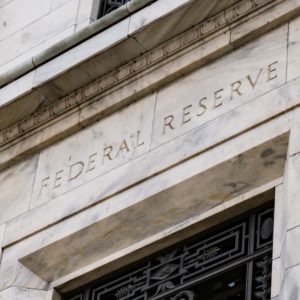
This originally appeared in DCJournal.com
Former Treasury Secretary Lawrence Summers criticized the Federal Reserve recently for having “itchy fingers to start cutting rates.” His comments came a day after policymakers revised their forecasts for the central bank’s benchmark interest rate with the median estimate still indicating three rate reductions in 2024.
Despite the downward pressure on inflation, supply-side dynamics and numbers do not suggest the underlying inflation rate is near (or approaching) 2 percent tomorrow.
Supply chains have not normalized after years of disruption caused by COVID-19 and the war in Ukraine. Attacks on commercial vessels in the Red Sea (and their subsequent rerouting alongside delays) have caused additional price bumps with shipping goods worldwide.
Resolving the challenges is not easy. Supplier networks became increasingly complex as producers and retailers sought a globalized marketplace, expanding consumer demand and pursuing greater cost efficiencies.
The result is an overly extensive network of supplier relationships, routes and exchanges. As the story goes, if the world was required to buy locally for a week, consumer spending would nearly die (with most products flowing through multiple countries on the value chain to get to the end consumer).
The added dynamics of protectionism and nearshoring also create upward pressure on prices as companies are forced to reorganize supply chains on short notice.
For example, a fight for semiconductor dominance led to the CHIPS and Science Act, which is an American congressional act to bolster semiconductor capacity.
President Biden also signed an executive order restricting outbound investments into China’s semiconductor, artificial intelligence, and quantum computing industries with the intent of preventing the transfer of know-how from American companies to Chinese companies.
As a result of these policies, companies are exploring new production hubs, such as India and Vietnam, for the technology sector. The likely outcome, as production hubs take time and capital to build, will be increased costs today due to delays in throughput at the new supply chokepoints.
The United States is still in the “toddler” stage of energy transition — a toddler believes he can do many things by himself that he does not have the skills, money or age to do today.
Energy transition without Chinese supply chains looks impossible — 80 percent of battery supply chains are in China as is a larger share of solar wafer production, according to Wood Mackenzie, a global provider of data and analytics.
While U.S. officials have become more present at mining conferences across the globe, China was a first mover in pushing its mining companies to search the globe for the metals and rare earth elements.
The process of re-shoring and near-shoring supply chains for the United States will require significant capital. According to Wood Mackenzie, Net Zero requires $29 trillion of capital expenditure across power and renewables by 2050 with that number estimated to be 20 percent higher (an additional $6 trillion) for a “not made in China” transition for power.
Finally, new regulations on tailpipe emissions all but ensure that electric vehicles will make up 35 percent to 56 percent of the sales by 2032, according to the Environmental Protection Agency.
The new standards do not mandate the sale of certain vehicles but establish vehicle regulations that force carmakers and sales in one direction — yet road infrastructure, including charging stations, is not at (or projecting toward) the required level to support the imagined number of EVs under the new regulations. Bumping up demand without the supply will not help prices in the short term.
Inflation will remain more persistent than expected as these supply chain difficulties are unlikely to ease significantly in 2024.
Fed Chairman Jerome Powell speculating that the Fed is “in the right place” or that the Fed is “not far” from having the confidence to cut rates all but raises the pressure to make cuts in 2024.
And to push toward the Fed benchmark rate of 2.6 percent?
The Fed should create a public space for maneuvering — at times, the Fed can appear to give more hope than a dose of reality.
Today, supply chains and global market dynamics point toward a higher benchmark rate — maybe 3.5 percent or 4 percent?
The Fed should not have a shocked face each month when the underlying market data exhibits something other than a perfectly normalizing market … despite our deepest desire to see one.
